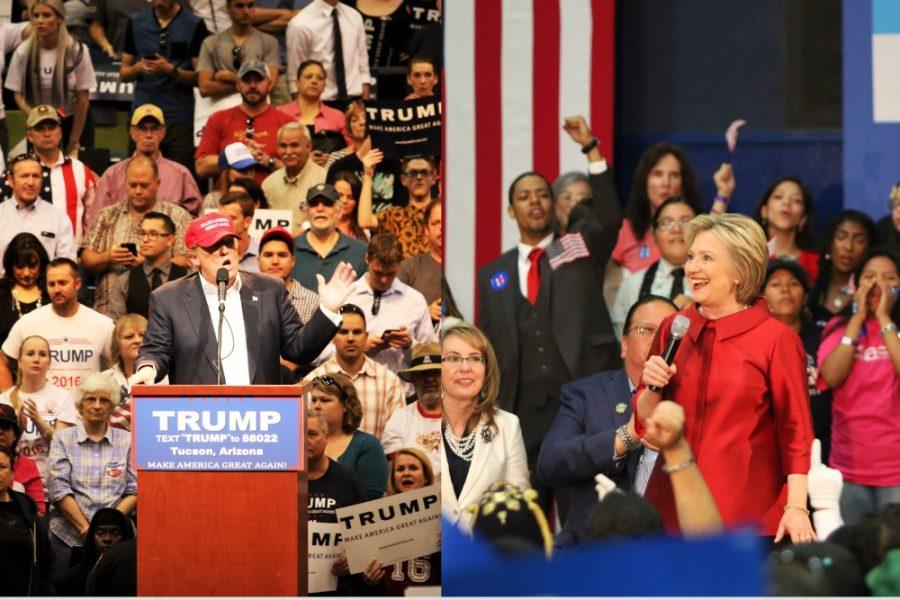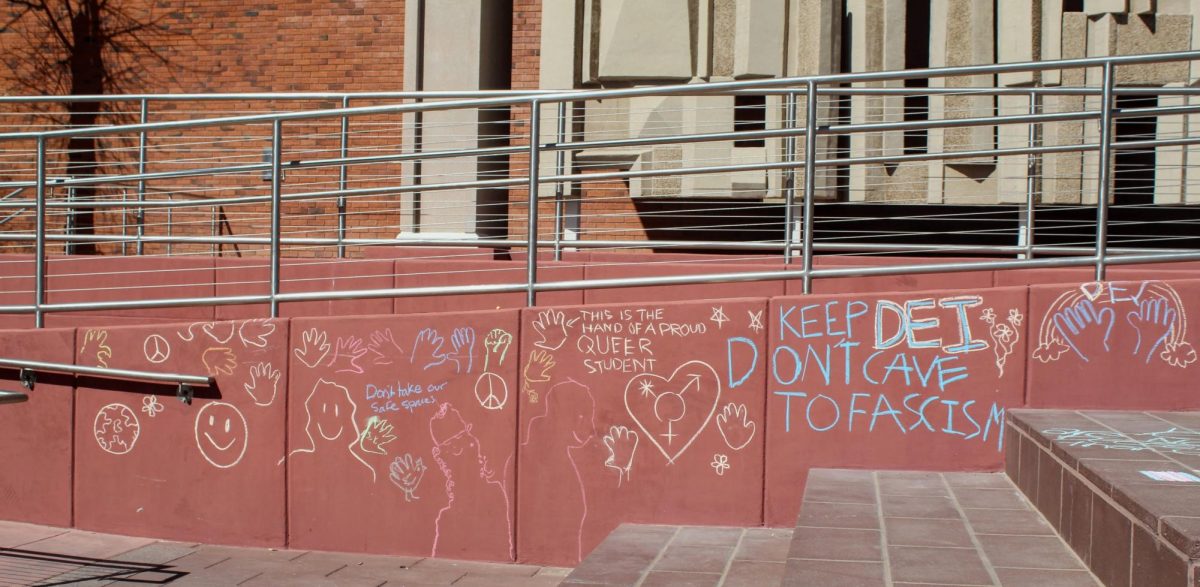Bill Clinton is the only democratic presidential candidate to turn Arizona blue in the past 64 years. Hillary Clinton, according to some experts, may become the second.
Arizona was a conservative, southern Democratic state before Barry Goldwater’s unsuccessful presidential campaign in 1964, according to Barbara Norrander, a professor at the School of Government and Public Policy.
Goldwater is responsible for building up the Republican party’s dominance that has lasted ever since, according to Norrander.
Arizona Democrats enjoyed a period of populist support under two-term governor Janet Napolitano, said Dino Kadich, secretary general of UA’s Model UN and a geography sophomore, but they have suffered in the state since.
RELATED: Social media crucial in presidential election
For the first time since her husband won the state during his reelection campaign, Hillary Clinton and the Democrats have a chance to turn Arizona blue, and Kadich believes they will.
Clinton has a two percentage point lead over Donald Trump with 11 percent of likely voters supporting a third party candidate, according to the most recent Arizona poll from Oct. 6, sponsored by Emerson College.
The Clinton campaign designated Arizona a competitive state and subsequently sent a team of staffers to Arizona to strengthen her ground campaign, according to Kadich.
The campaign also vowed to spend thousands of dollars on advertising. Arizonans may have already seen her “Role Models” ad that began airing around the nation. It shows children watching some of Trump’s incendiary comments.
Kadich said Trump, who may have to defend Arizona, plans on flooding the airwaves before the election, which historically inspires voter turnout.
Many factors put Arizona’s traditionally conservative voting record in to question this presidential election, Norrander said.
One Arizona, an organization that tracks and encourages Latino voting, predicts over one million Latinos will be eligible to vote and will make up one-fifth of the voters this election, with the numbers expecting to climb.
An increased Latino turnout would change the composition of the electorate and shift it in favor of the Democrats, according to Norrander.
RELATED: Senator John McCain urges UA veterans to vote, but not for Trump
Kadich said Democrats have been attempting to increase historically low Latino turnout in the state with well-organized voter registration campaigns.
One Arizona, a “nonpartisan coalition led by 14 grassroots organizations supports family values that are truly inclusive of all people, regardless of race, economic status, gender, reproductive choices, or sexual preference,” according to the organization’s website, reported a five-fold increase in Latino turnout in Phoenix’s most recent mayoral election from 2011.
If these trends remain consistent, this will give Democrats an advantage in future Arizona elections, according to Norrander.
Arizona’s conservatives are divided into different groups, one being the Libertarians, Norrander said. The Libertarian faction of the conservative majority in Arizona may choose to vote for Gary Johnson if they are not happy with Trump.
With Johnson already polling more than seven percent in Arizona, a repeat of the 1996 spoiler caused by Ross Perot, could hand Arizona’s electoral votes to Clinton, according to Norrander.
Lauren McCarthy, a regional director for the Gary Johnson campaign, said Arizona will not go blue this election. She noted Johnson will not spoil Arizona for Trump because Johnson is drawing more votes from former Clinton supporters than Trump supporters.
Arizona has a significant Mormon population and Trump’s comments on Mitt Romney have lowered his favorability among Mormon voters. Norrander said this was evident in his poor results in the Utah primary.
Trump polls poorly with wealthy college-educated Republicans, Kadich said. Many Maricopa County voters fall in this demographic and may harm Trump’s chances in the state.
A poor performance by Trump in the state could also hurt McCain’s senate reelection chances according to his campaign.
Norrander said McCain is less likely to be impacted by a Clinton landslide than other down-ballot candidates because he is a well-known incumbent and can be more easily separated from Trump by voters.
McCain recently withdrew his support for the Republican nominee in light of an audio recording containing vulgar comments about women alluding to sexual assault. McCain released a statement saying he could not vote for a candidate who disrespects a majority of the electorate.
FiveThirtyEight, and election forecast and data journalism site, placed Clinton’s chance of winning Arizona this election season at 51.4 percent as of Oct. 15 and marked Arizona as one of 14 states to watch this election.
Even with changing demographics, Arizona could remain a red state in the future, Norrander said, as demographics are constantly changing.
A few elections ago, Latino voters were up for grabs, but currently, Latinos’ increasing voter share provides Democrats with an advantage. Republicans could attract those votes by bringing forward new policies, Norrander said.
She added the national divide between urban and rural voters could come in to play in Arizona. In this dynamic election cycle and the near future, whether Arizona will turn blue remains to be seen.
Follow Randall Eck on Twitter.









